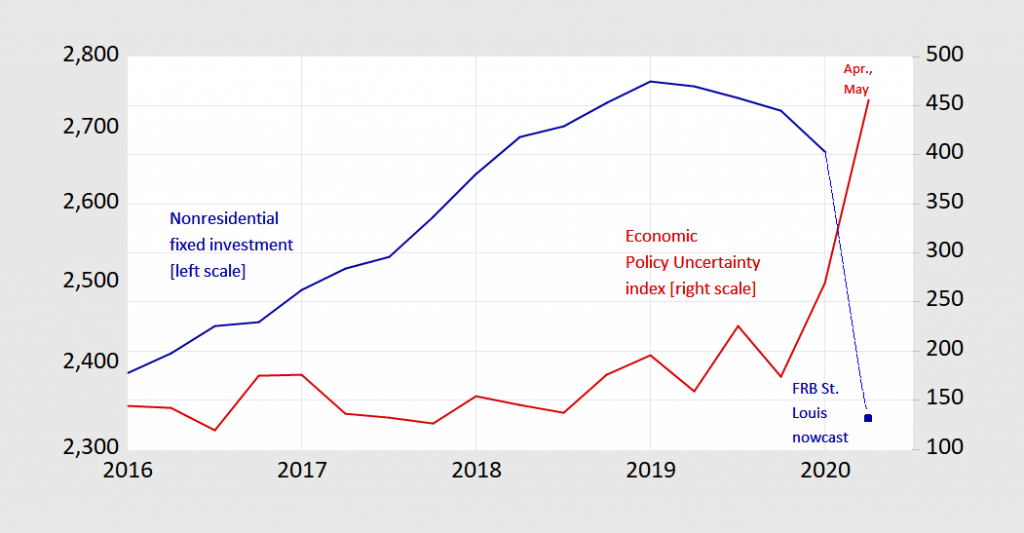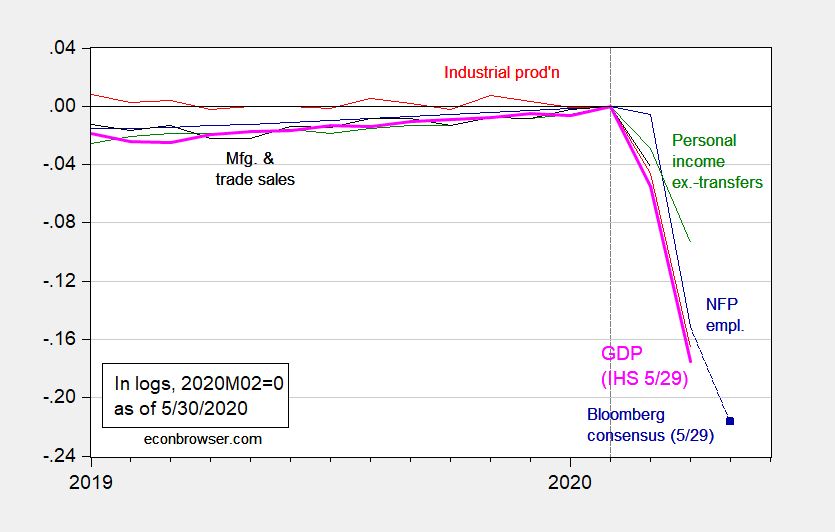Today, we’re pleased to present a guest contribution by Rob Fairlie (UC Santa Cruz).
Guest Contribution: “A Severe US Recession”
Today, we’re pleased to present a guest contribution written by Laurent Ferrara (SKEMA Business School and International Institute of Forecasters) .
Assessing Covid-19 Trends in Wisconsin
The Golden Rule: Understand…your…data
Interpreting the unemployment numbers
The Bureau of Labor Statistics announced Friday that 2.5 million more Americans were working in May than in April. That’s the biggest monthly increase since 1946, both in terms of the number of workers and as a percentage of the workforce. The unemployment rate dropped from 14.7% in April to 13.3% in May, the biggest monthly drop since 1950. All this is very good news. But there are also indications that we are in a deeper hole than the headline numbers suggest. Here I explain why I believe the true unemployment rate in May was a number more like 19.8%.
Continue reading
Guest Contribution: “Global financial markets and oil price shocks in real time”
Today, we are pleased to present a guest contribution written by Fabrizio Venditti (European Central Bank) and Giovanni Veronese (Banca d’Italia). The views expressed in this paper belong to the authors and are not necessarily shared by the Banca d’Italia and the European Central Bank.
Guest Contribution: “Uncovered Interest Rate Parity Redux: Non-Uniform Effects”
Today, we’re pleased to present a guest contribution written by Yin-Wong Cheung and Wenhao Wang (City University of Hong Kong).
Forward Looking Economic Activity, Pre-Covid19
The economy is collapsing. That’s not news. What is interesting is that nonresidential fixed investment has been falling since 2019Q1.
Figure 1: Nonfarm fixed investment in billions Ch.2012$ SAAR (blue, left log scale), and Economic Policy Uncertainty index (red, right scale). 2020Q2 investment is St. Louis Fed nowcast as of 6/1; 2020Q2 EPU is for first two months, as of 6/1. Source: BEA 2020Q1 2nd release, St. Louis Fed FRED, policyuncertainty.com and author’s calculations.
Guest Contribution: “How China Compares Internationally in New GDP Figures”
Today, we present a guest post written by Jeffrey Frankel, Harpel Professor at Harvard’s Kennedy School of Government, and formerly a member of the White House Council of Economic Advisers. A shorter version appeared in Project Syndicate May 28th and The Guardian.
Business Cycle Indicators, 30 May 2020
Figure 1: Nonfarm payroll employment (blue), industrial production (red), personal income excluding transfers in Ch.2012$ (green), manufacturing and trade sales in Ch.2012$ (black), and monthly GDP in Ch.2012$ (pink), all log normalized to 2019M02=0. Source: BLS, Federal Reserve, BEA, via FRED, Macroeconomic Advisers (5/29 release), Bloomberg, and author’s calculations.
As of Friday, May 29th, NY Fed, Atlanta Fed and St. Louis Fed nowcasts for Q2 are -35.8%, -51.2%, and -49.75% (SAAR), respectively. IHS Markit is -42.9%.
The Hill: “White House to forgo summer economic forecast amid COVID-19, breaking precedent”
That’s from an article today:
The White House will not release an updated round of economic projections this summer, breaking from precedent as the U.S. faces its deepest downturn since the Great Depression, two administration officials familiar with the decision confirmed to The Hill on Thursday.

